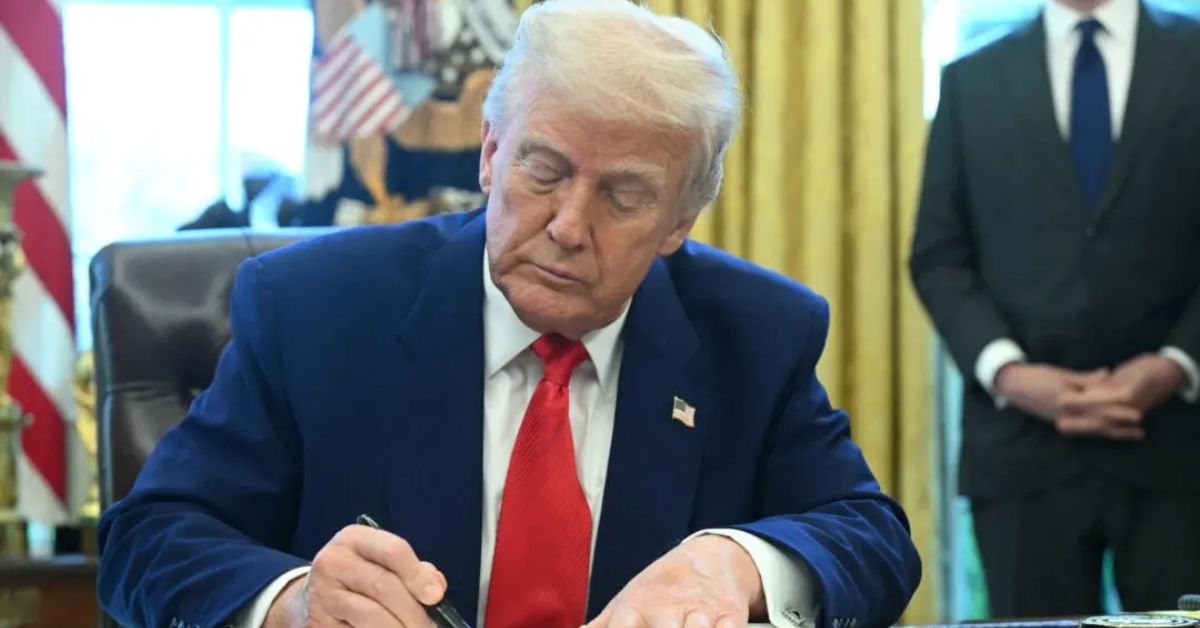President Donald Trump signed a memorandum extending the hiring freeze for federal civilian employees for another 90 days, meaning the hiring pause will continue until mid-July. This decision is part of the administration’s broader goal to reduce the size and scope of the federal government.
According to the memorandum, no vacant civilian government roles will be filled, and no new positions will be created unless explicitly approved by the administration. The freeze does not affect military personnel or positions related to immigration enforcement, national security, or the office of the president. This latest action comes as part of Trump’s continued push to reduce what he and his supporters see as an overly large and inefficient government workforce.
Background of the Hiring Freeze
The hiring freeze was initially introduced on Inauguration Day, January 20, 2017, as one of Trump’s first official actions in office. At the time, Trump made clear that his administration aimed to cut government spending and shrink the federal workforce. He argued that the government had grown too large, with an overwhelming number of bureaucrats who did not fully support his political agenda. The hiring freeze was intended to slow the growth of federal jobs and help reduce the size of the government over time.
Since the freeze was introduced, the Trump administration has made several attempts to reduce the federal workforce by laying off employees from various government agencies. These moves have sparked debates about the potential effects on government services, especially as many of these cuts have been made in key departments that provide essential services to citizens.
Impact on Federal Agencies and Workers
Various government agencies have already made significant cuts to their workforces. The Departments of Education, State, Health and Human Services, and Veterans Affairs have all experienced job reductions as part of this broader effort to reduce the federal government’s workforce.
The freezes and layoffs in these agencies have raised questions about the long-term impact on the quality of services they provide. For example, if the Department of Education has fewer employees, how will it manage its responsibilities, including overseeing public education policy and ensuring compliance with federal laws?
One area that has drawn particular attention is the Department of Veterans Affairs. As the agency responsible for caring for military veterans, any reductions in its workforce raise concerns about the quality of healthcare and other services that veterans receive. Critics argue that cutting positions in this department could negatively affect the care that veterans need and deserve.
Moreover, the federal hiring freeze has faced criticism from some quarters for potentially exacerbating existing issues in government services. With fewer employees, agencies may struggle to meet the increasing demands placed on them by a growing population and the need for more efficient services.
For instance, public services such as healthcare, education, and veterans’ care may face delays or become less effective due to understaffing. This situation is particularly concerning when many people rely on these services for their well-being.
Elon Musk and Government Efficiency
The hiring freeze has also stirred controversy because of Elon Musk’s involvement in the Department of Government Efficiency. Musk, a well-known entrepreneur and CEO of companies like Tesla and Spacex, has been tasked with leading efforts to reduce government spending and streamline operations. His role in pushing for further cuts to the federal workforce has led to backlash, with critics questioning whether Musk’s experience in the private sector translates well to the public sector.
Musk’s involvement in government efficiency initiatives has added fuel to the fire for those who already oppose Trump’s policies on reducing government size. Critics argue that Musk’s influence in government is problematic because he lacks direct experience in managing the intricacies of federal services. His business model, based on cutting-edge technology and private sector innovation, may not be entirely applicable to government departments that handle public welfare and are not profit-driven.
On the other hand, supporters of the administration’s cost-cutting efforts argue that the government should be run more like a business, with a focus on efficiency and results rather than the size of the workforce.
Proponents also argue that with the aid of technology and modern management strategies, the government can operate more efficiently with fewer employees, thereby reducing wasteful spending and directing resources toward the most critical needs.
Cabinet Secretaries and Workforce Reduction Decisions
While Trump has signed off on the extended hiring freeze, he has made it clear that the responsibility for determining which federal employees should be laid off or reassigned falls to the individual Cabinet secretaries. Each Cabinet secretary is tasked with determining the most effective way to implement workforce reductions within their department. This approach allows each agency to make decisions based on its specific needs and goals, rather than applying a one-size-fits-all solution.
For instance, the Secretary of Education may decide to reduce administrative staff in non-essential areas, while the Secretary of Veterans Affairs may focus on streamlining its medical staff or back-office operations. While this decentralised approach gives each agency more flexibility, it also leaves room for inconsistency in how cuts are made, potentially leading to disagreements or even inefficiencies between departments.
Some critics have expressed concerns about the transparency and fairness of this process. With each department having the freedom to make its own decisions, there may be questions about whether the cuts are truly necessary or whether they are based on political considerations. Furthermore, the decision-making process may lack sufficient oversight, leading to concerns about favouritism or poorly executed downsizing efforts.
Future of Federal Employment and Services
The extended hiring freeze and the ongoing cuts to the federal workforce signal a shift in how the U.S. government operates. With a smaller government, the administration hopes to make services more efficient and less costly. However, the effects on public services are still unclear, and many people are anxious about what the future holds.
If the government continues to reduce its workforce, it will need to find innovative ways to maintain the level of service that citizens expect. Technologies such as automation and artificial intelligence could play a significant role in mitigating the impact of job cuts. However, even with new technologies, challenges will likely remain in ensuring that public services remain accessible and effective for everyone, particularly for vulnerable groups that rely heavily on government assistance.
As the debate over the size and efficiency of government continues, it remains to be seen whether the administration’s efforts to shrink the federal workforce will lead to long-term improvements in government operations or if they will create unintended consequences that hurt the very citizens the government is supposed to serve.
Disclaimer: This article has been meticulously fact-checked by our team to ensure accuracy and uphold transparency. We strive to deliver trustworthy and dependable content to our readers.


